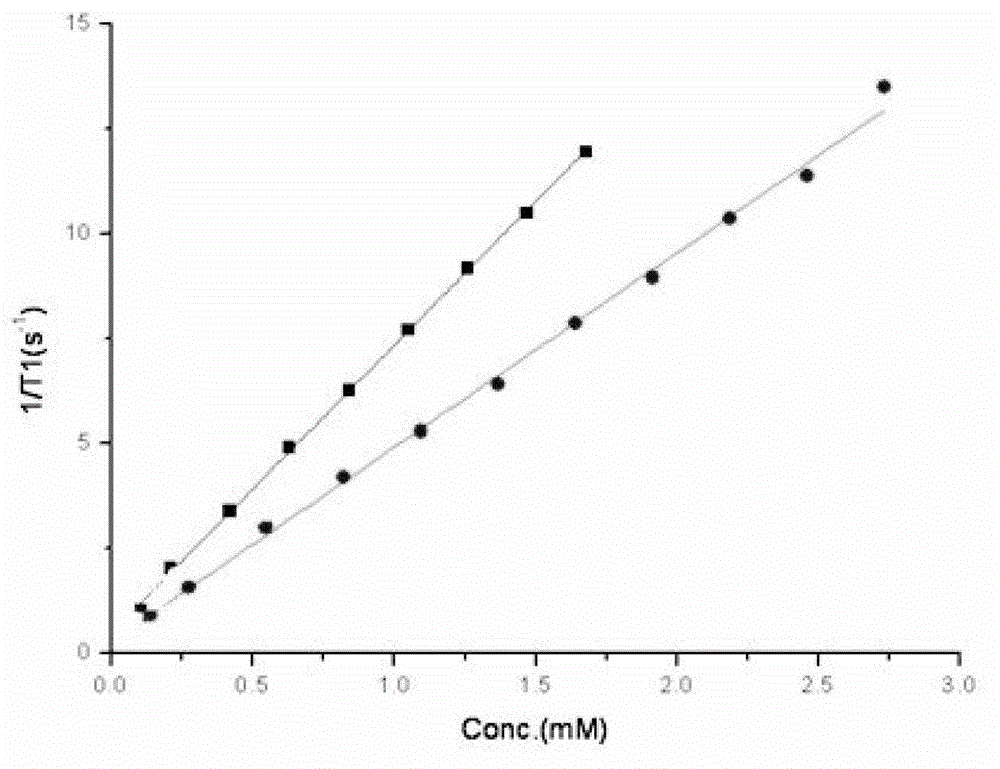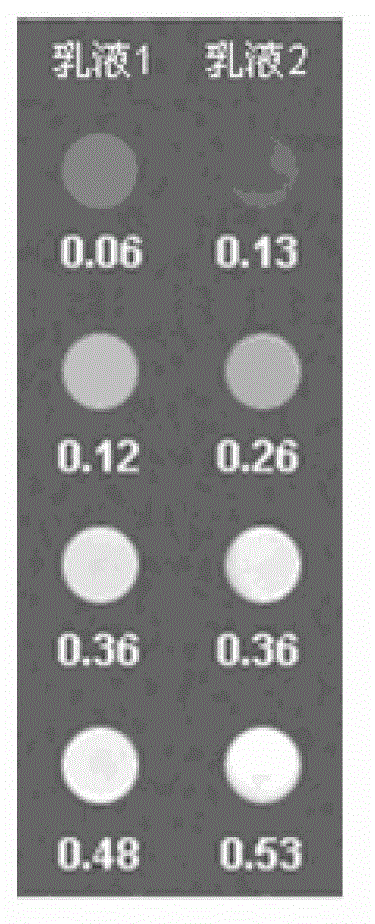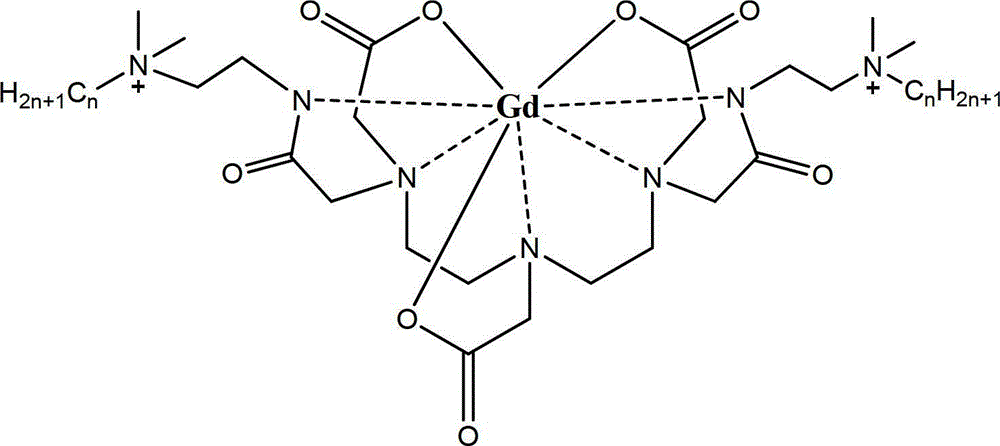Double-strand quaternary ammonium type nuclear magnetic resonance imaging contrast agent and preparation method thereof
A nuclear magnetic resonance imaging and double-chain quaternary ammonium technology, which is applied in the preparation of carboxylic acid amides, chemical instruments and methods, and the preparation of organic compounds, can solve problems such as restricted applications and unsatisfactory water solubility.
- Summary
- Abstract
- Description
- Claims
- Application Information
AI Technical Summary
Problems solved by technology
Method used
Image
Examples
Embodiment 1
[0045] (1) Preparation of DTPA derivatives: Take 1.9g of diethylenetriaminepentaacetic acid, add 3g of acetic anhydride to acetonitrile and pyridine, and react at 50°C for 24 hours. The filter residue was washed with diethyl ether, and the resulting white powder was vacuum-dried for later use.
[0046] (2) Weigh 8g of N,N-dimethylethylenediamine, add 12g of redistilled diethyl carbonate, react at 60-90°C for 48 hours, distill under reduced pressure at 80°C to remove excess diethyl carbonate, A yellow-brown liquid was obtained.
[0047] (3) Weigh 10g of ethyl N,N-dimethyloxalamide, add 16g of hexadecane bromide, adjust the temperature to 60-100°C, and react for 72 hours.
[0048] (4) After the reaction is completed, the volume ratio of the preparation is HBr:H 2 Add 100ml of O=1:1 solution into the reaction flask, and reflux at 100°C for 24 hours. The water in the system is removed to obtain a long-chain quaternary ammonium salt with terminal amines.
[0049] (5) Diethylene...
Embodiment 2
[0051] Preparation of Gd-DTPA derivatives: Dissolve 600mg of DTPA derivatives in 5ml of water, adjust the pH to 5-8, add 1.2 equivalents of gadolinium chloride, react at 50-100°C for 24 hours, and then adjust the pH to 9 Left and right, filter with a microporous membrane to obtain an aqueous solution of Gd-DTPA derivatives (Formula 1).
Embodiment 3
[0053] Measure a certain volume of Gd-DTPA aqueous solution according to the measured concentration, add 0.1-0.4g of styrene, 0.01-0.02g of divinylbenzene, 10-20 mg of cetyl alcohol, 5-10 mg of AIBN, 50- React under nitrogen protection at 100°C for 6-8 hours, filter and dialyze for 3-5 days, the obtained emulsion is evenly dispersed, and prepare solutions with different concentrations (such as figure 2 shown), the relaxation rate was measured by magnetic resonance imaging, and the transverse relaxation time has a good linear relationship with the concentration of gadolinium ions (such as figure 1 shown), the final calculated transverse relaxation rate r 1 =11.5mM -1 S -1 .
PUM
 Login to View More
Login to View More Abstract
Description
Claims
Application Information
 Login to View More
Login to View More - R&D
- Intellectual Property
- Life Sciences
- Materials
- Tech Scout
- Unparalleled Data Quality
- Higher Quality Content
- 60% Fewer Hallucinations
Browse by: Latest US Patents, China's latest patents, Technical Efficacy Thesaurus, Application Domain, Technology Topic, Popular Technical Reports.
© 2025 PatSnap. All rights reserved.Legal|Privacy policy|Modern Slavery Act Transparency Statement|Sitemap|About US| Contact US: help@patsnap.com



